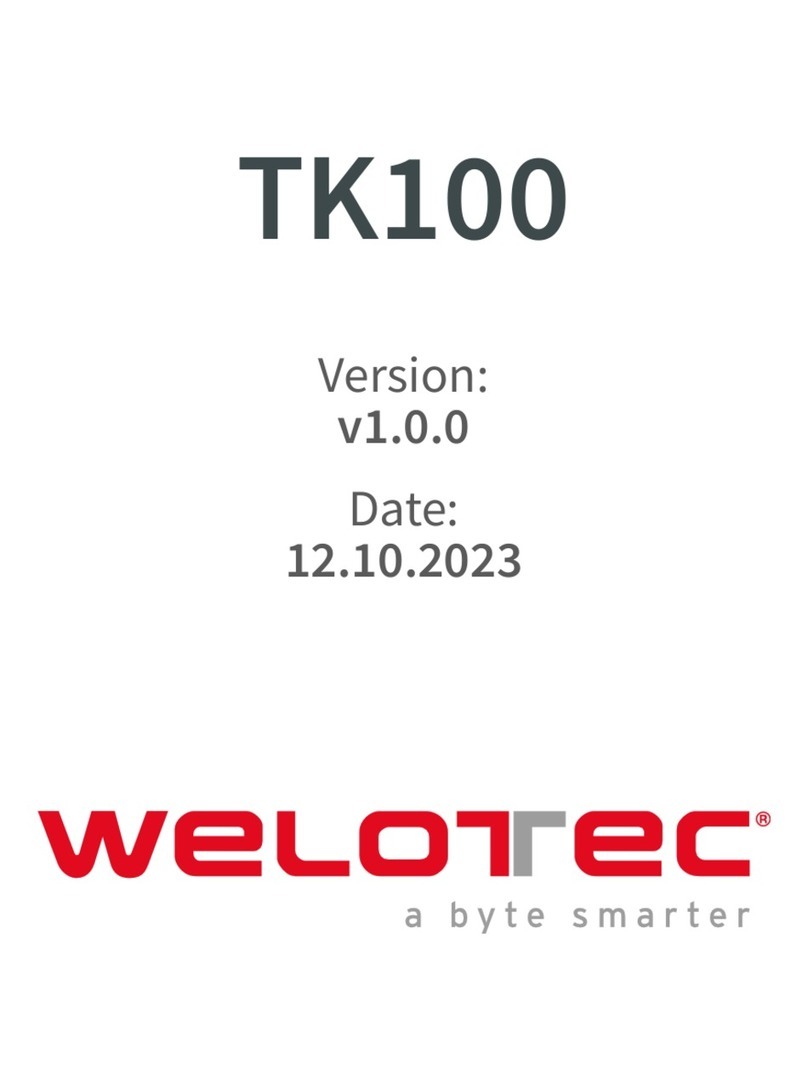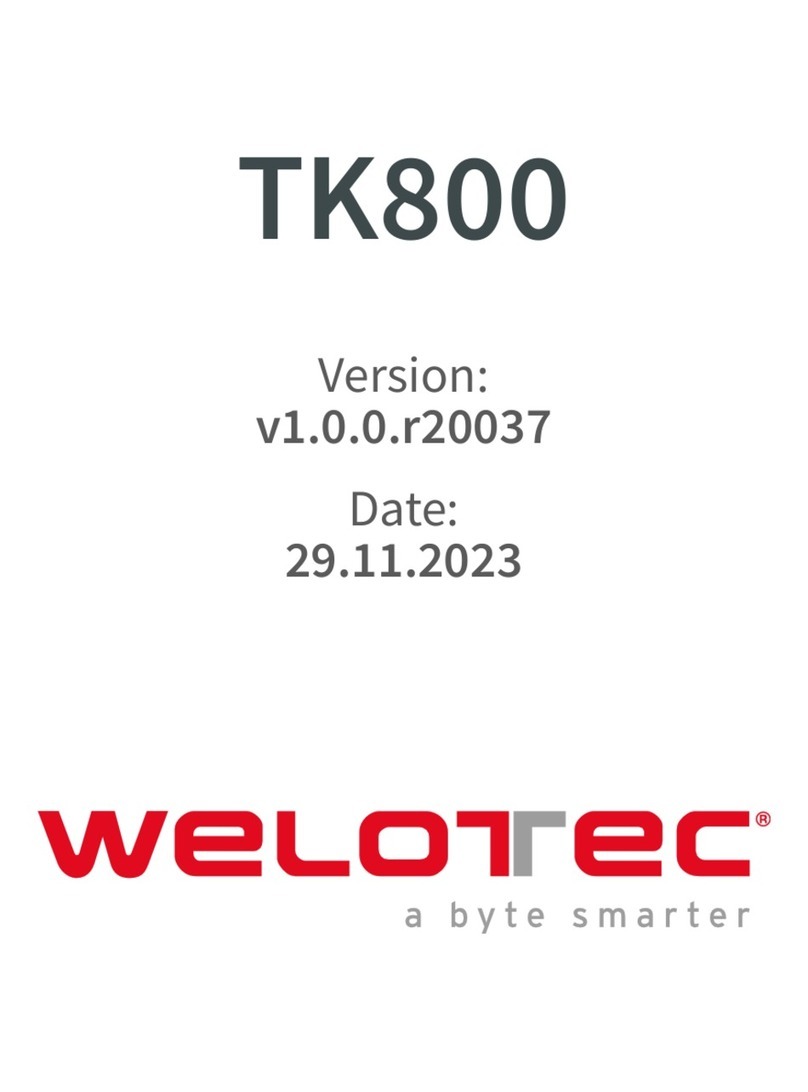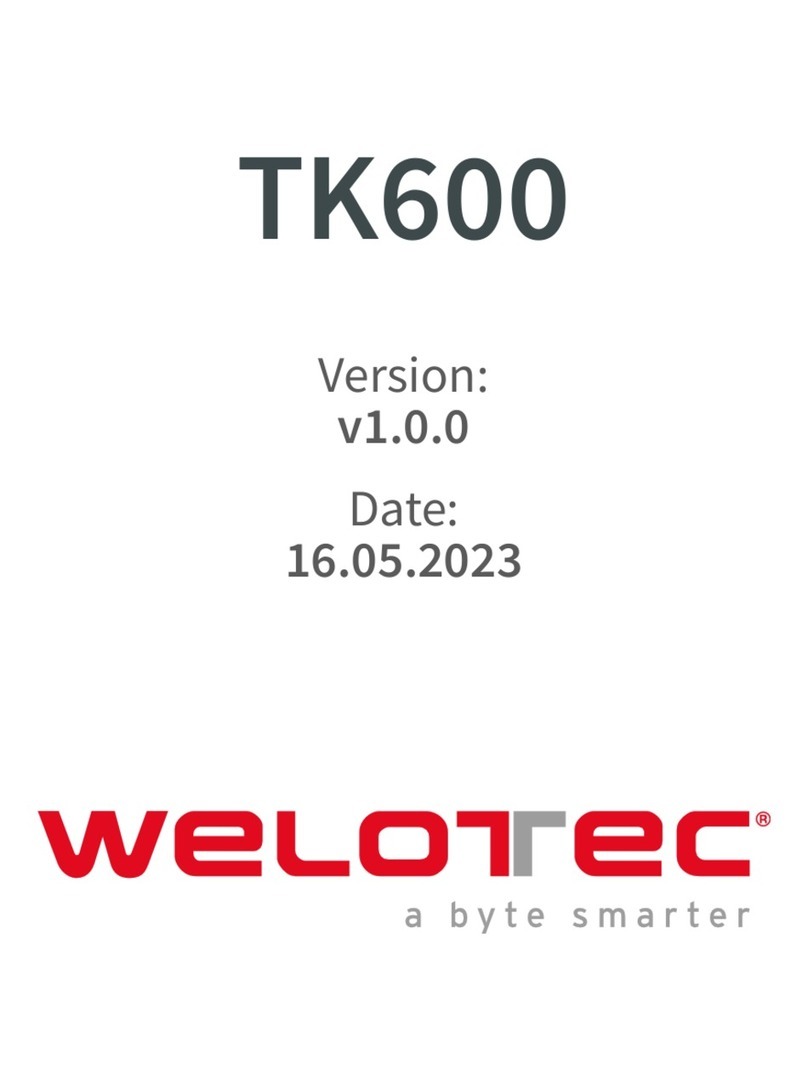
Welotec - TK500 Router Series Manual
TABLE OF CONTENTS
1. TK500-Series - Introduction.......................................................................................4
1.1. Package checklist .............................................................................................................. 6
1.2. Product information .......................................................................................................... 7
1.2.1. Environmental conditions.................................................................................................. 7
1.2.2. Power supply..................................................................................................................... 7
1.2.3. Physical characteristics ...................................................................................................... 7
2. Installation manual.....................................................................................................8
2.1. Typical application............................................................................................................. 8
2.2. Connection plan................................................................................................................ 8
2.2.1. Connection of serial interfaces and I/O‘s.......................................................................... 8
2.3. Fast internet connection ................................................................................................... 10
2.3.1. Insert the SIM card ............................................................................................................ 10
2.3.2. Installation of the antenna................................................................................................. 10
2.3.3. Power supply..................................................................................................................... 10
2.3.4. Connect ............................................................................................................................ 10
2.3.5. First connecting of the TK-Router device to the PC ......................................................... 10
2.3.6. Configuring the TK500 (optional)...................................................................................... 13
2.3.7. Connect the TK router with the Internet ........................................................................... 15
2.4. Reset to factory settings.................................................................................................... 17
2.4.1. Hardware method ............................................................................................................. 17
2.4.2. Web method ..................................................................................................................... 18
3. System.......................................................................................................................19
3.1. System............................................................................................................................... 21
3.1.1. Basic Setup........................................................................................................................ 21
3.1.2. Time .................................................................................................................................. 22
3.1.3. Serial Port.......................................................................................................................... 23
3.1.4. Admin Access.................................................................................................................... 23
3.1.5. System Log........................................................................................................................ 24
3.1.6. Config Management ......................................................................................................... 25
3.1.7. Scheduler .......................................................................................................................... 25
3.1.8. Upgrade ............................................................................................................................ 26
3.1.9. Reboot .............................................................................................................................. 27
3.1.10. Logout............................................................................................................................... 27
3.2. Network............................................................................................................................. 28
3.2.1. Dialup................................................................................................................................ 28
3.2.1.1. Schedule Management .................................................................................................... 30
3.2.2. WAN (only for TK5x5L-W, TK5x5L, TK5x5U) ..................................................................... 31
3.2.2.1. Static IP ............................................................................................................................. 31
3.2.2.2. Dynamic Address (DHCP)..................................................................................................32
3.2.2.3. ADSL Dialup (PPPoE)......................................................................................................... 33
3.2.3. WAN(STA) ......................................................................................................................... 34
3.2.4. Link Backup ....................................................................................................................... 34
3.2.5. LAN ................................................................................................................................... 35
3.2.6. Switch WLAN Mode.......................................................................................................... 36
3.2.7. WLAN................................................................................................................................ 36
3.2.7.1. WLAN Client ..................................................................................................................... 38
3.2.8. DNS .................................................................................................................................. 38
3.2.9. DDNS (Dynamic DNS)....................................................................................................... 39
3.2.10. Static Route....................................................................................................................... 41
3.3. Services ............................................................................................................................. 42
3.3.1. DHCP Service.................................................................................................................... 42
3.3.2. DNS Relay ......................................................................................................................... 43
3.3.3. VRRP.................................................................................................................................. 43
3.3.4. DTU ................................................................................................................................... 45
3.3.5. SMS ................................................................................................................................... 46
3.3.6. Traffic Manager ................................................................................................................. 47






























